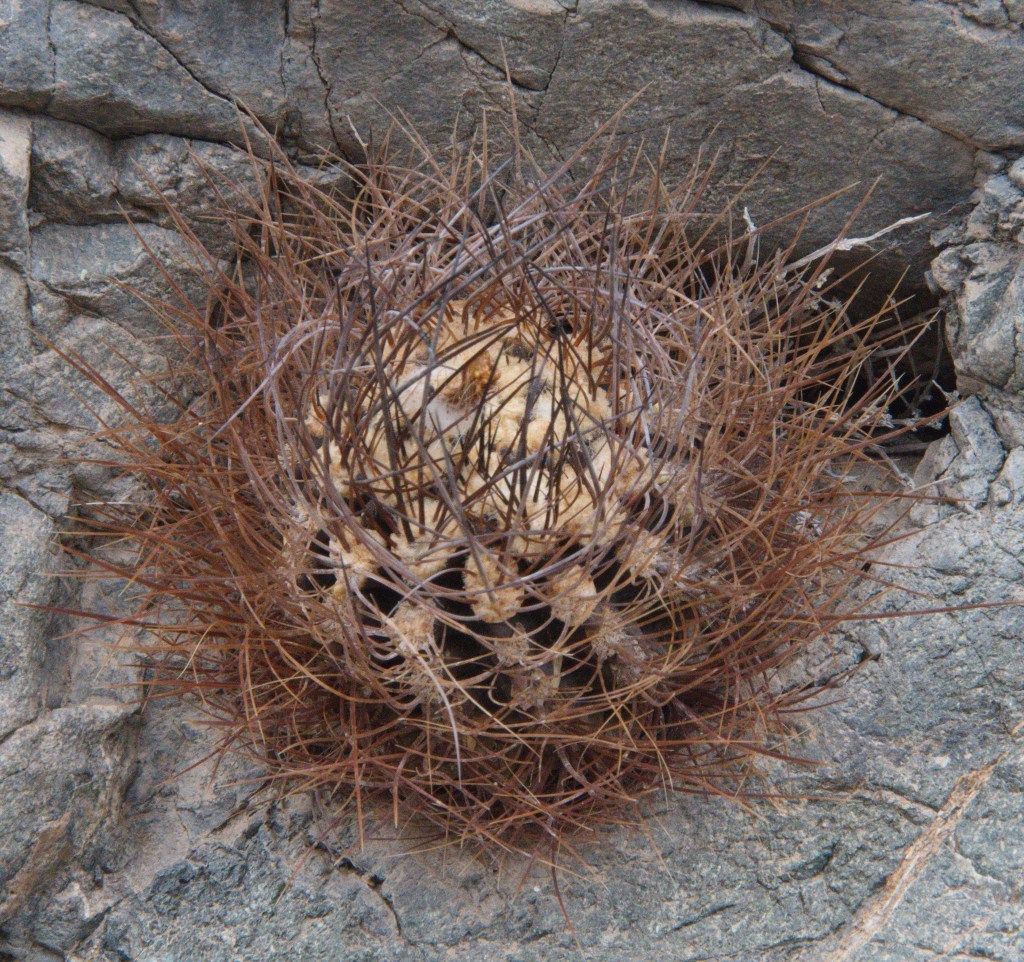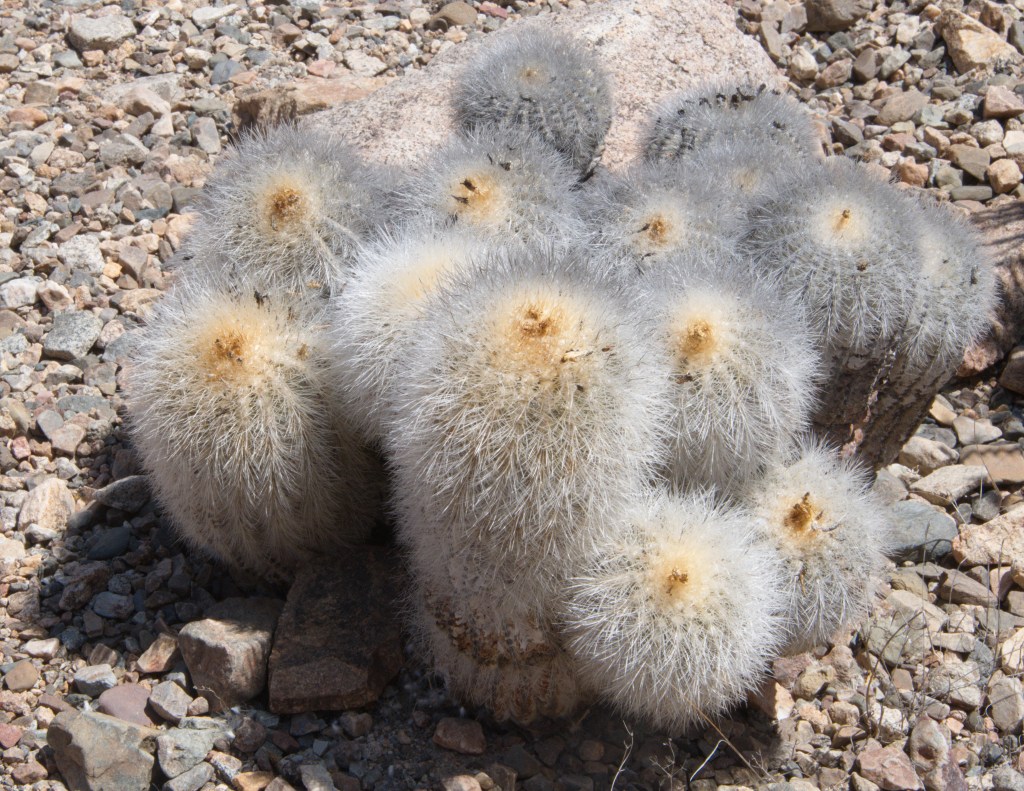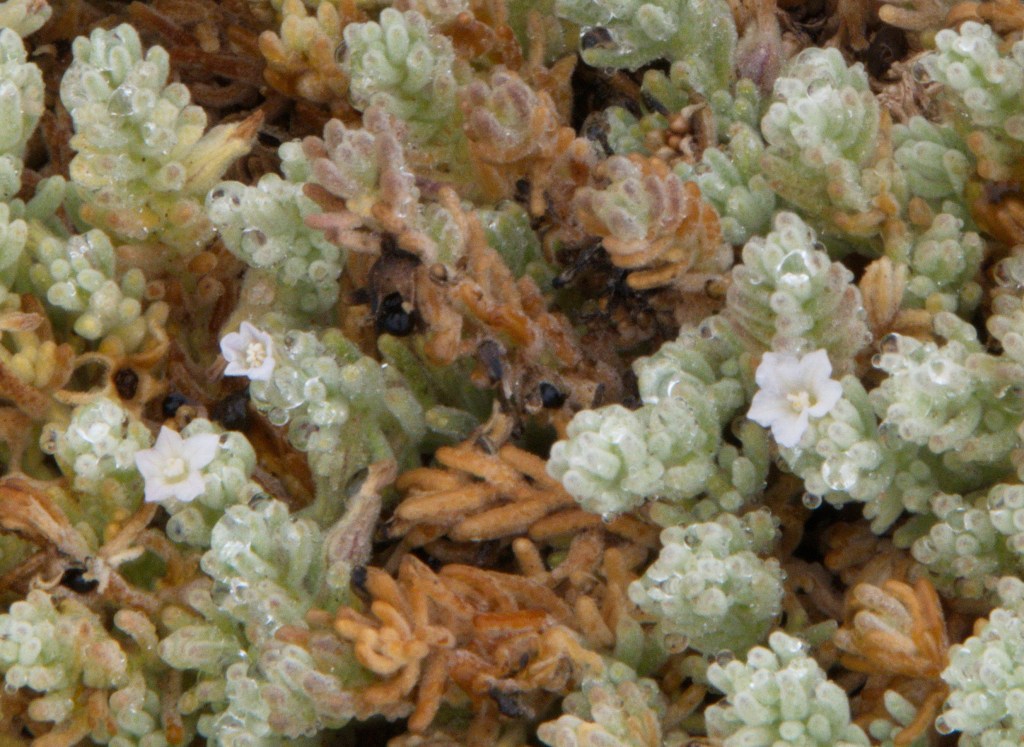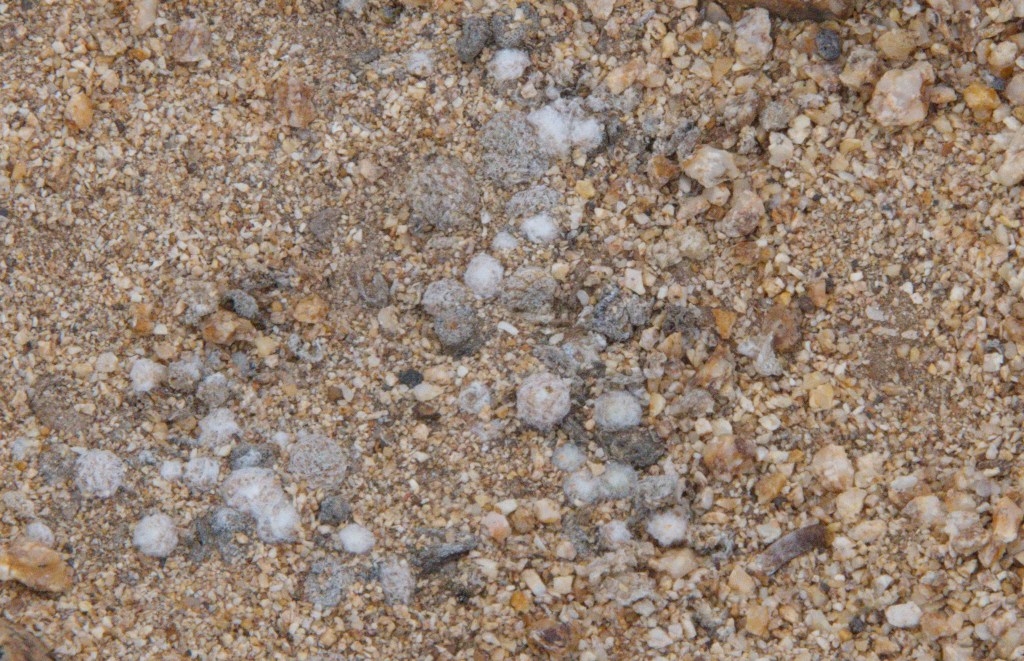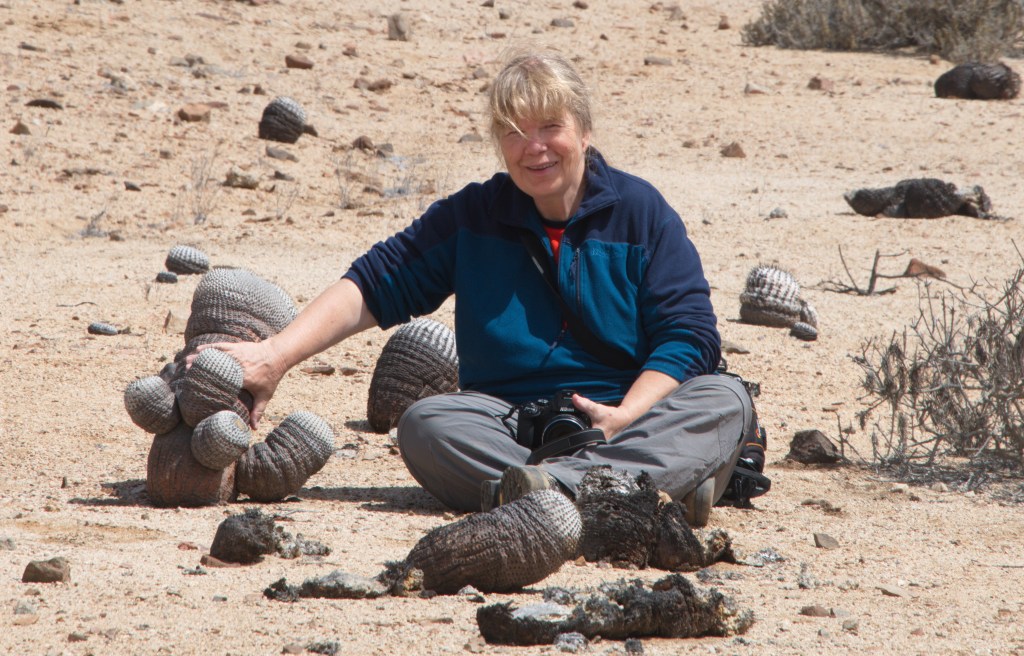Not sure if the social unrest yesterday was to blame, but we were without internet for most of the day, so the page for Wednesday 13 September covering our trip to Botija will be published later.
We started with a visit to the Taltal Museum where a friend from previous visits was now working. We kept in touch on Facebook, so it was the least that we could do to pay her a visit. We enjoyed a lengthy chat before the call of cacti in the hills became too strong!
After yesterday’s rather long trip to Botija via El Cobre, we had decided on a rather easier day, a stop some 20 km east of Taltal at Las Breasas where in the past we would visit a huge population of Copiapoa cinerea subsp. cinerea. Ian and Al were suitably impressed, both by the number of plants (the comment: ‘Enough plants for every C&S Society member in the world!’ was heard. Yes, and on several planets more!)
They looked in reasonable health with small apical patches of white wool showing that they were in growth and even buds showing on a number of plants. This is the spot that we flew my drone on a previous visit in 2015 with Jonathan Clark as co-pilot and Brian Bates as himself. Bart and Marijke Hensel were on hand to lend moral support. On our first attempt we flew the drone very well and celebrated with a bottle of bubbly that Bart & Marijke had brought along for the occasion. We then raced back to the hotel to download the files on the disk where the movie file of the flight were stored. Disappointment awaited as either Jonathan or I had failed to press the ‘record’ button on one of the control panels. But this is not a blame game, so we promised to come back after first racing to Tocopilla as Brian new of spots where C. tocopilliana and Eriosyce laui could be photographed.
More disappointment as the track that Brian had used on a previous visit had a huge 10 m wide whole in it either caused by an earthquake or the heavy rains that had caused havoc in Chile early on in 2015. There was no obvious way to circumnavigate the hole and too hot and far to walk around it, tired as we were from the long drive from Taltal.
We left early the next day to drive back to Taltal and made a second attempt at flying the drone. This time Jonathan and I must have checked three times that the ‘record button’ had been pushed! Success!
But back to the here and now where Ian and Al had closed their mouths and seemed to be involved in a project to photograph every plant from at least two angles. We climbed a low hill offering a view along the valley that we were in, the valley next door and another flat area in the valley beyond hours. So why are cacti considered to be so endangered? At the entrance to this spot are huge concrete works to control water and sludge running down the hills and causing serious damage to the people and property in the town of Taltal. On that occasion, the flood must have wiped out a large number of plants. As the flood defense works were built another significant number of plants would have been destroyed. The plants grow in a material that appears ideal for building material. The beginning of the area is a huge quarry with truck in an almost continuous stream driving in, to be filled up and drive out again. These activities seem to have moved at least a km. into the area where the plants grow. Taltal is a growing place with lots of the ramshackle houses now replaced by modern but basic homes. There are posters showing the building plans of 2-3 floor apartment blocks, reminding me of similar building activity in Salisbury, UK. So why should the people in Taltal not enjoy similar living standards? No reason at all, but lets hope that in sourcing their building material they do not destroy their nature!
Friends in Europe had suggested that there was a new location where we could photograph Copiapoa krainziana without the need for the 7 km walk through the Quebrada San Ramon.
In 2015, while flying our drone at Las Breasas, Brian Bates found one lonely multi-headed plant of kraiziana among the billions of C. cinerea. Google Earth suggested that this location may be connected to the Las Breasas area and that this plant could reasonably have been washed down the hill, although I would have expected to find more plants then just the one.
So we decided to drive on as far as we could; a good deal farther than I had expected but not getting closer to the krainziana coordinates that we had. Ian had a number of SatNav / GPS tools on his mobile phone each providing different suggestions of where we should go, all agreeing that we were getting farther away. Cliff Thompson will be familiar with this when we were hunting for Uebelmannia spots in Brazil in 2009! Very frustrating!
We decided to return back to the main road where we could ask our tools for directions again. The mobile phone apps seemed in general agreement so we followed their instructions obediently, although it was blindingly obvious that nothing could grow in the area that we were being led to. Right on the spot indicated we stopped, on a good track but without any plants or signs of life. Angie volunteered to walk up a hill so that she could sing ‘So we do like to be beside the seaside’ but as she was facing east rather than west, that sea would have been the Atlantic Ocean, with the Andes and the whole of Argentina in the way! Thanks for the heroic effort, but clearly none of us were thinking straight!
We got back around five and enjoyed the new room that our hosts at Hotel Plaza had provided on the ground floor, having seen me struggle carrying bags up and down the stairs. Early signs of arthritis we think – must check what the impact might be on Travel Insurance costs and what can be done. More tablets? I already rattle like a pair of maracas since 2006’s heart-attack!
We’ll await until Ian Woolnough and party arrive in a few days time and use his geography expertise to find the most eastern Copiapoa krainziana!
But now it is time for food and check out the Chilean’s ability to make Margaritas! It will make a nice change from the Pisco Sours.

